After the Austro-Hungarian Compromise of 1867, it became increasingly urgent to ensure an adequate water supply to the capital, which was developing at a rapid pace. The most effective way to curb typhoid and cholera epidemics that erupted from time to time was to build a water system. In the 1860s, two opinions came to light: coastal filtration on the gravel layers of the Danube and “artificial filtration”.
The latter was proposed by William Lindley (1808-1900), an English engineer who arrived in Pest in 1868, but due to limited financial resources, he eventually undertook the construction of well water production as a temporary waterworks on the site of today's Parliament, serving the needs of the Pest side. In addition to the waterworks, the reservoir basin in Kőbánya, the main pipeline and the distribution network were built at the time.
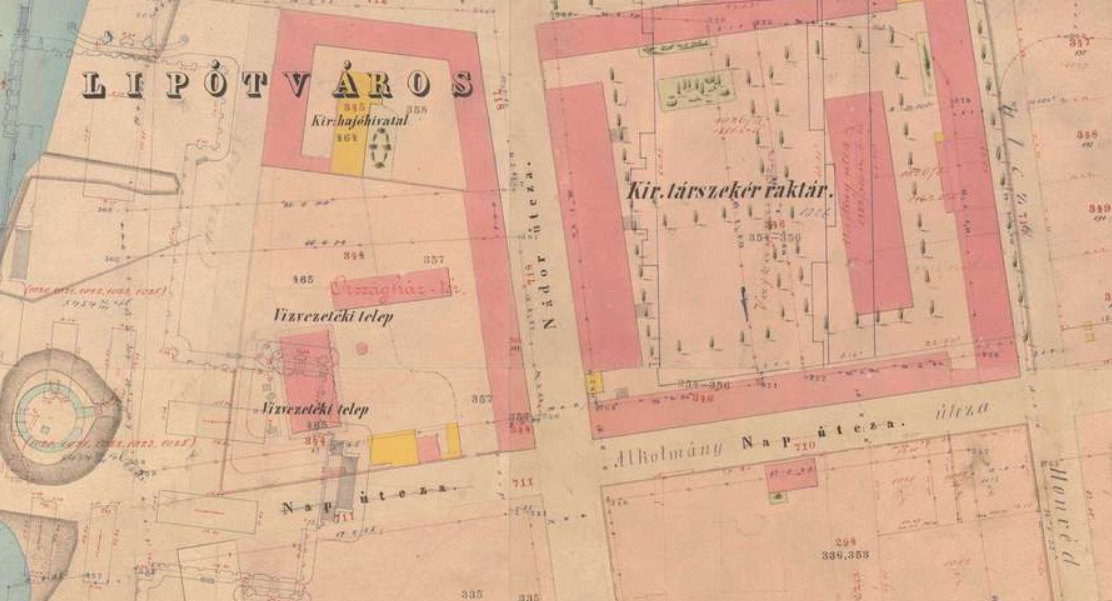
The temporary aqueduct plot on the site of today's Parliament around 1870 (Source: mapire.eu)
The urban development and construction that followed the unification of Pest, Buda and Óbuda in 1873 also brought an increase in the population, so the temporary waterworks proved to be small, and Lindley was also criticised. After his dismissal, in 1873, the first director of the waterworks was János Wein (1829-1908), who was a believer in natural filtration. He commissioned exploratory drilling to avoid previous failures and criticisms, based on which he saw opportunities for development in Újlak, Óbuda, the northern end of Óbudai Island, Pest on Újpesti Island and the right bank of the Danube.
The right bank waterworks was built in Budaújlak according to his plans, and the expansion works of the temporary waterworks started, which had to be relocated because the area was designated as the location of the Parliament. After many years of discussions, the construction of the final waterworks started at the suggestion of János Wein in Káposztásmegyer and was completed by his successor, Mihály Kajlinger.
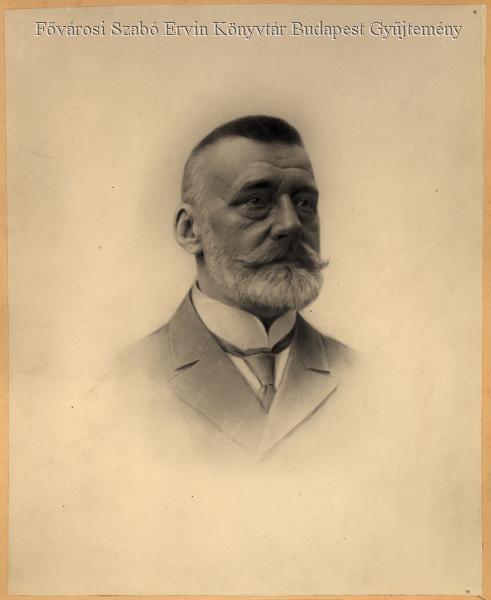
Mihály Kajlinger, director-general of Budapest Waterworks ('Fővárosi Vízművek') around 1920 (Photo: FSZEK Budapest Collection)
Mihály Kajlinger was born in Budapest on 27 February 1860. He obtained a degree in mechanical engineering at the Royal Joseph University (today's Budapest University of Technology and Economics). As a young engineer, he served the capital in 1883. Initially, he was engaged in sewerage work, designed the 1,200-horsepower mechanical equipment of the central sewage pumping station, and then, recognising his talent, he was entrusted with the water supply issues of the capital.
During the discussions before the opening of the final waterworks supplying Budapest, a temporary filter plant was established in 1889 next to the machine house on Markó Street to ensure water supply, the technological and mechanical construction of which was planned by Kajlinger, and its operation was managed by him as well. In 1893, he drew up a plan for the layout and mechanical equipment of the main plot of Káposztásmegyer and was commissioned to design the second and third phases of the Káposztásmegyer waterworks and to manage the construction work.

The Káposztásmegyer water catchment area with the wells on the photo of Mór Erdélyi (Source: Vasárnapi Ujság, 13 August 1893)
Construction of the main plant began on 1 April 1893 and lasted for more than 10 years. After the retirement of János Wein in 1896, Mihály Kajlinger was appointed director of the Budapest Waterworks. He first held this position until 1909, then was re-appointed in 1917; until his death in 1924, he was director of the waterworks. In the meantime, he did not move away from the topic of water supply. He acted as a technical consultant.
 Construction of the Káposztásmegyer waterworks in the 1890s (Source: Fővárosi Vízművek Zrt. Archive)
Construction of the Káposztásmegyer waterworks in the 1890s (Source: Fővárosi Vízművek Zrt. Archive)
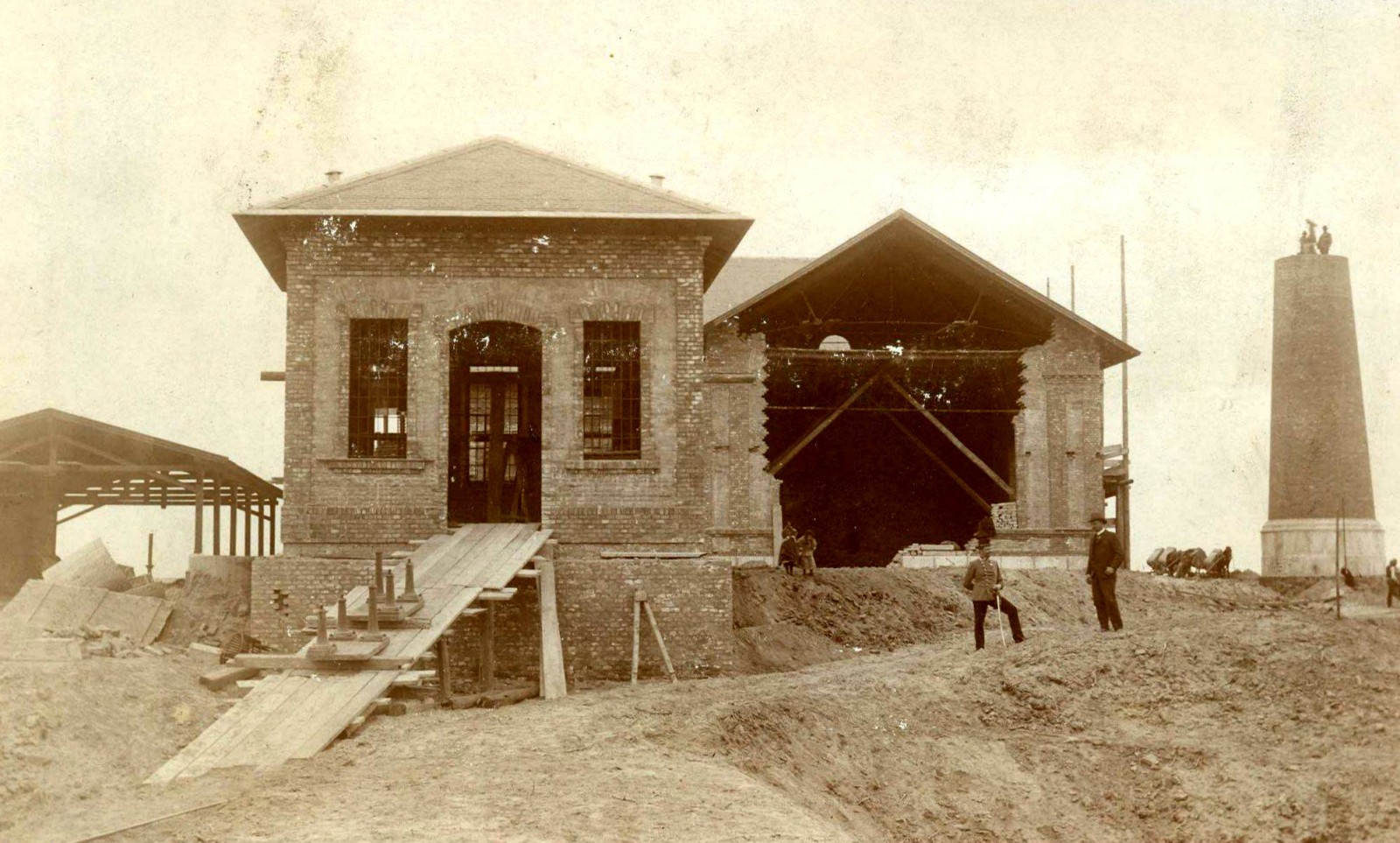 Construction of the engine room and chimney (Source: Fővárosi Vízművek Zrt. Archive)
Construction of the engine room and chimney (Source: Fővárosi Vízművek Zrt. Archive)
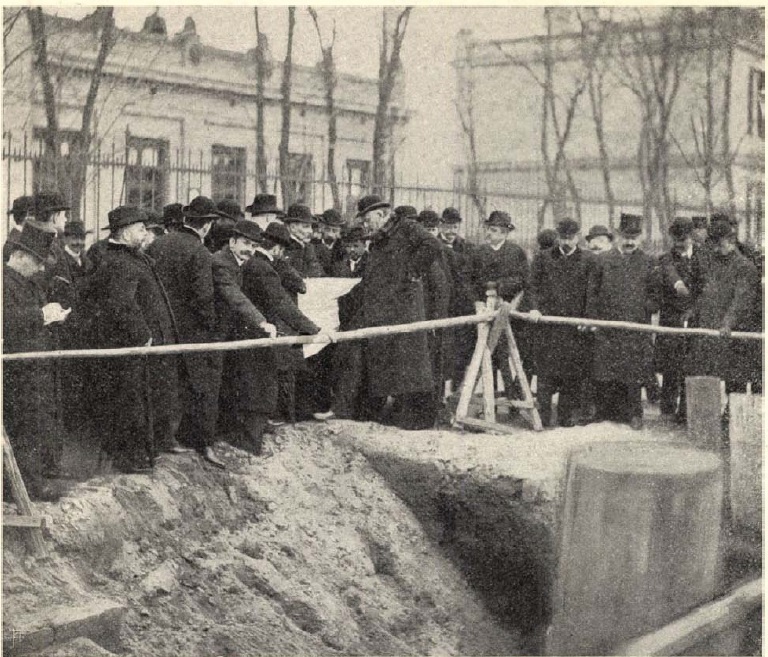
Expert inspection at the site in 1904 (Source: Vasárnapi Ujság, 10 April 1904)
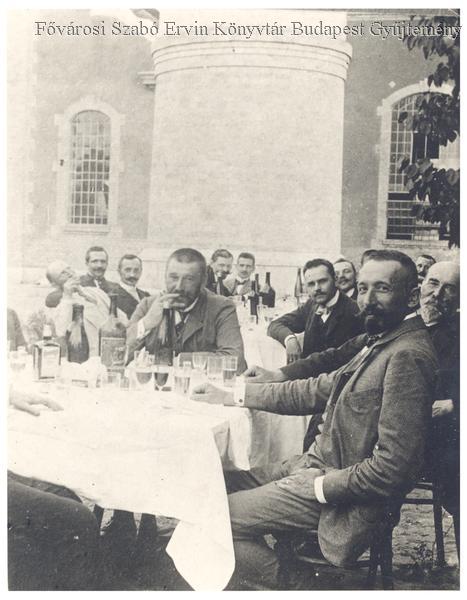
Banquet on the occasion of the completion of the works of the Káposztásmegyer waterworks around 1904. In the middle, Mihály Kajlinger with a cigarette (Photo: FSZEK Budapest Collection)
At the time of his first directorate, on 21 April 1904, the Káposztásmegyer waterworks was put into operation, which could supply the population of the capital with 240,000 cubic metres of drinking water per day. During the eleven years of construction, they dug four wells on the Újpest shoreline, and the two previous test wells were also used to ensure the amount of water, and in 1899, new wells were built on the border of Dunakeszi, on the island of Szentendre, a total of seventy-three. As part of the investment, the 1st and 2nd water-lifting installations, together with the loops and the twin canal, were completed, and also a cast-iron main line leading to the city (under Váci Road to Outer Ring Road), as well as the steam-powered engine rooms were finished. That became one of the most beautiful and modern waterworks in Europe at the time.
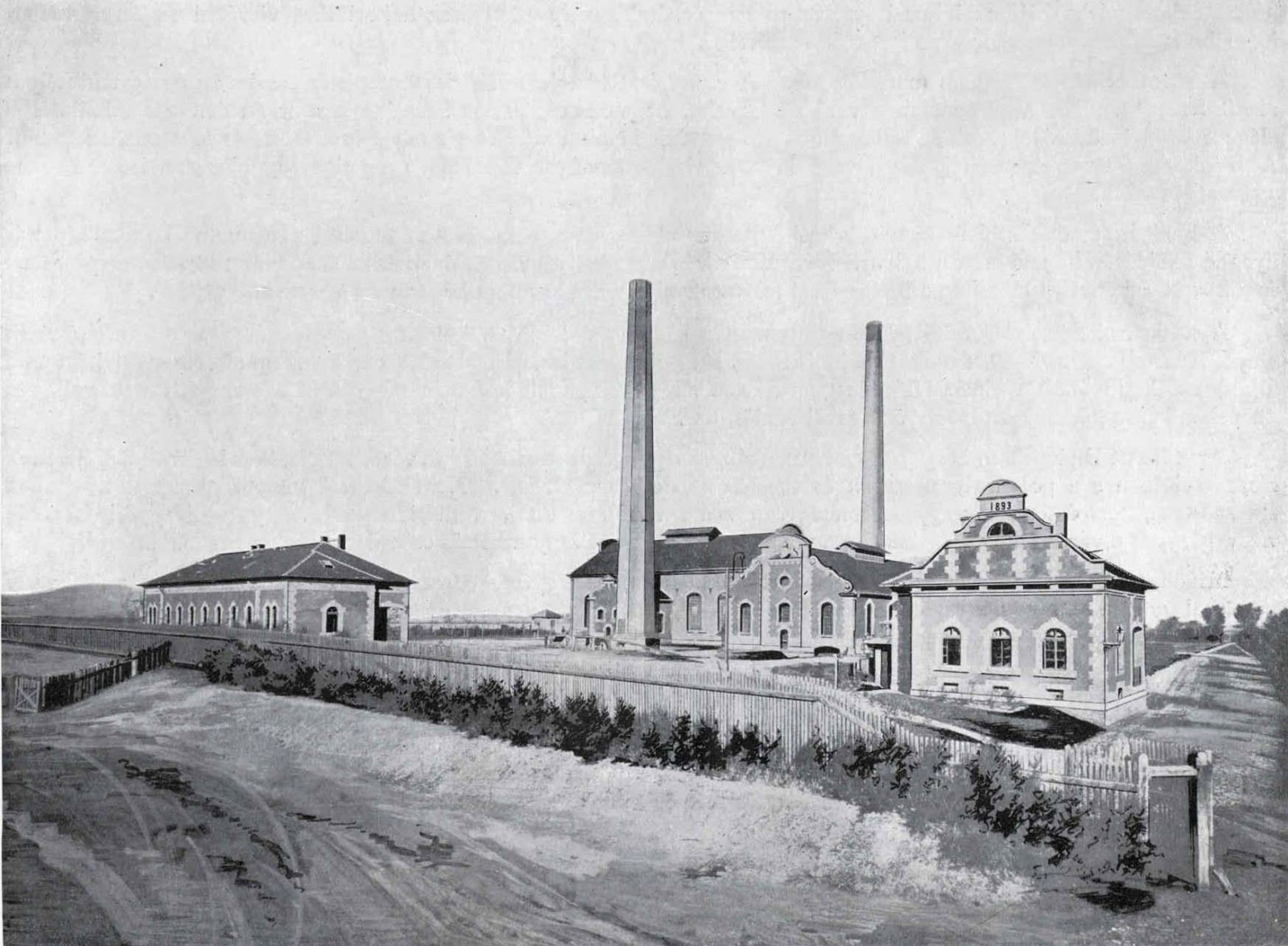 View of the Káposztásmegyer waterworks in the 1890s. To the right is the office building, next to the pump house. On the left side of the picture is a residential building. The facility was surrounded by a lath fence (Source: Fővárosi Vízművek Zrt. Archive)
View of the Káposztásmegyer waterworks in the 1890s. To the right is the office building, next to the pump house. On the left side of the picture is a residential building. The facility was surrounded by a lath fence (Source: Fővárosi Vízművek Zrt. Archive)
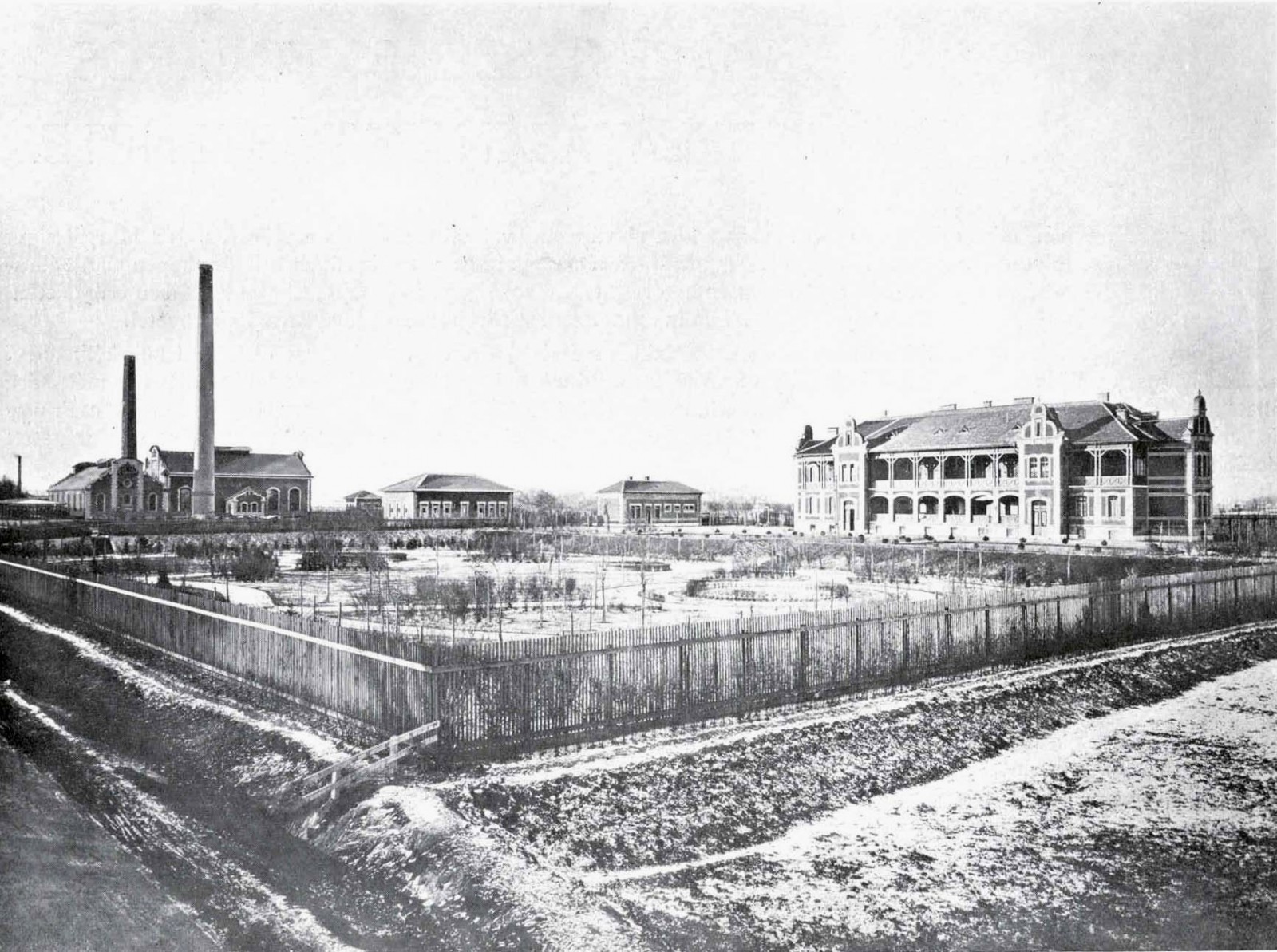
View of the plot with the residential house (Source: Fővárosi Vízművek Zrt. Archive)
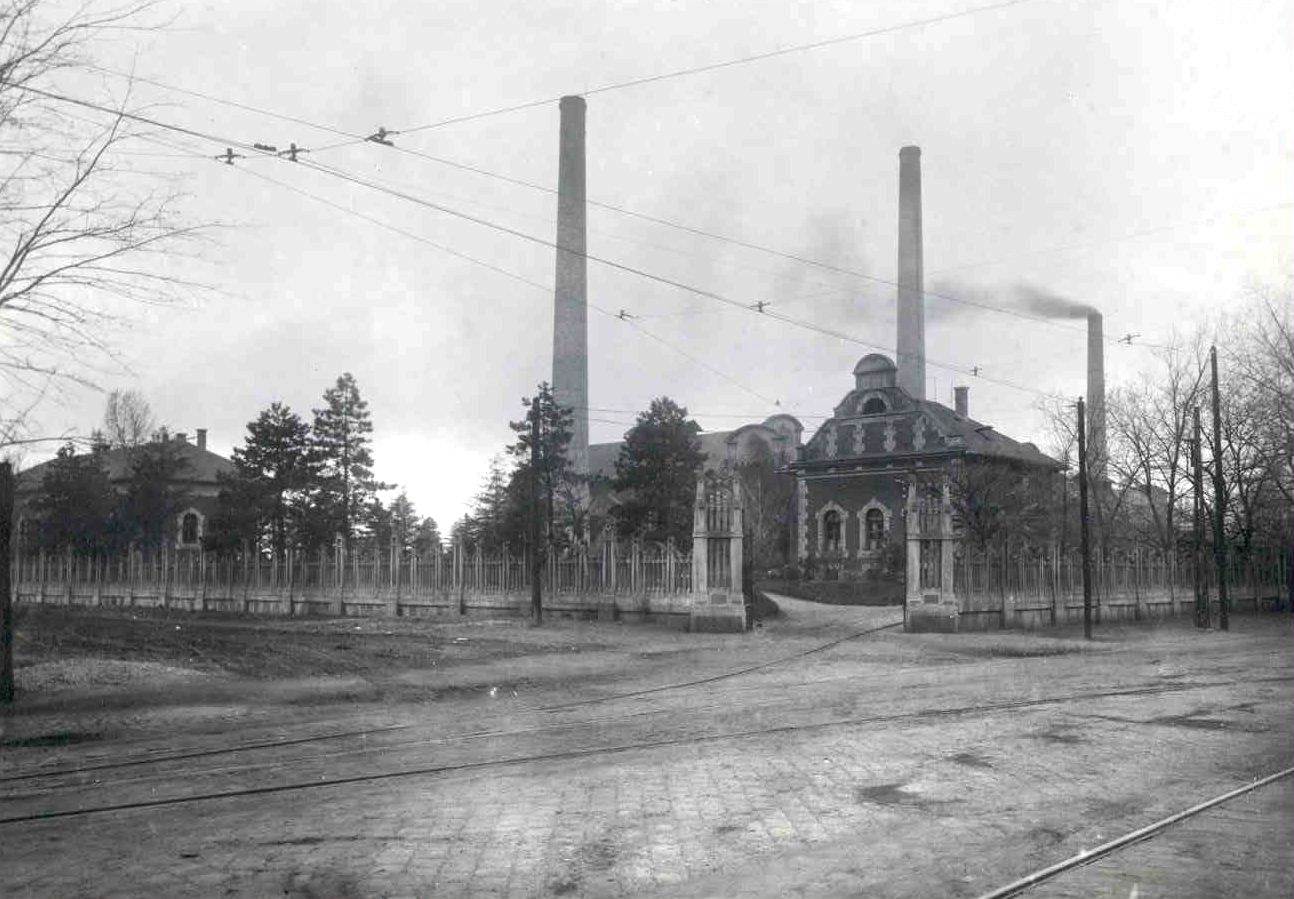
The reinforced concrete fence surrounding the site was completed in 1905 (Source: Fővárosi Vízművek Zrt. Archive)
In the early 1920s, the water supply problems in the capital began to multiply again, and the icy flood of 10 February 1923 broke the twin canals of Káposztásmegyer in two places, which supplied 75 per cent of Budapest's water supply, leaving 100,000 cubic metres of water out of the daily circulation, and the service had to be reduced to 5 hours a day. Pesti Hírlap reported on the front page about the disaster, which was completely restored in ten months, but the night suspension of water supply remained in force until 1925.
During the renovation and capacity expansion that began in 1927, the steam engines were switched to electric operation. The boiler houses were replaced by transformer stations, and the coal tanks were replaced by oil tanks. The devastation of World War II also caused significant damage to Budapest's water supply system. Restoration work was completed by the summer of 1947, and further development of the waterworks began. The waterworks were continuously developed and modernised from the late 1950s to meet growing demands, and in 1999, the northern computerised, automatic plant management system was handed over.
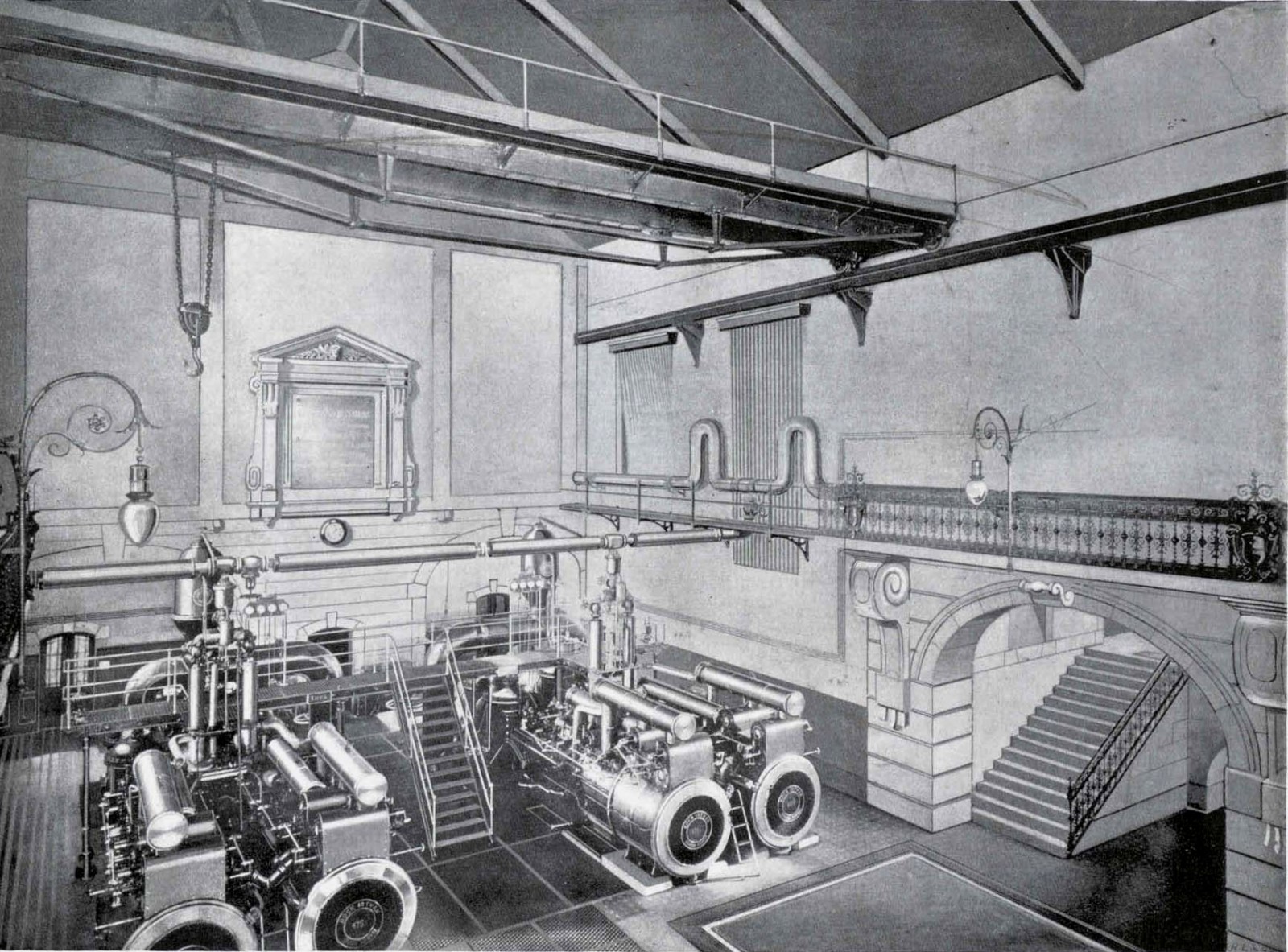 The machine house of the Káposztásmegyer waterworks in the 1910s (Source: Fővárosi Vízművek Zrt. Archive)
The machine house of the Káposztásmegyer waterworks in the 1910s (Source: Fővárosi Vízművek Zrt. Archive)
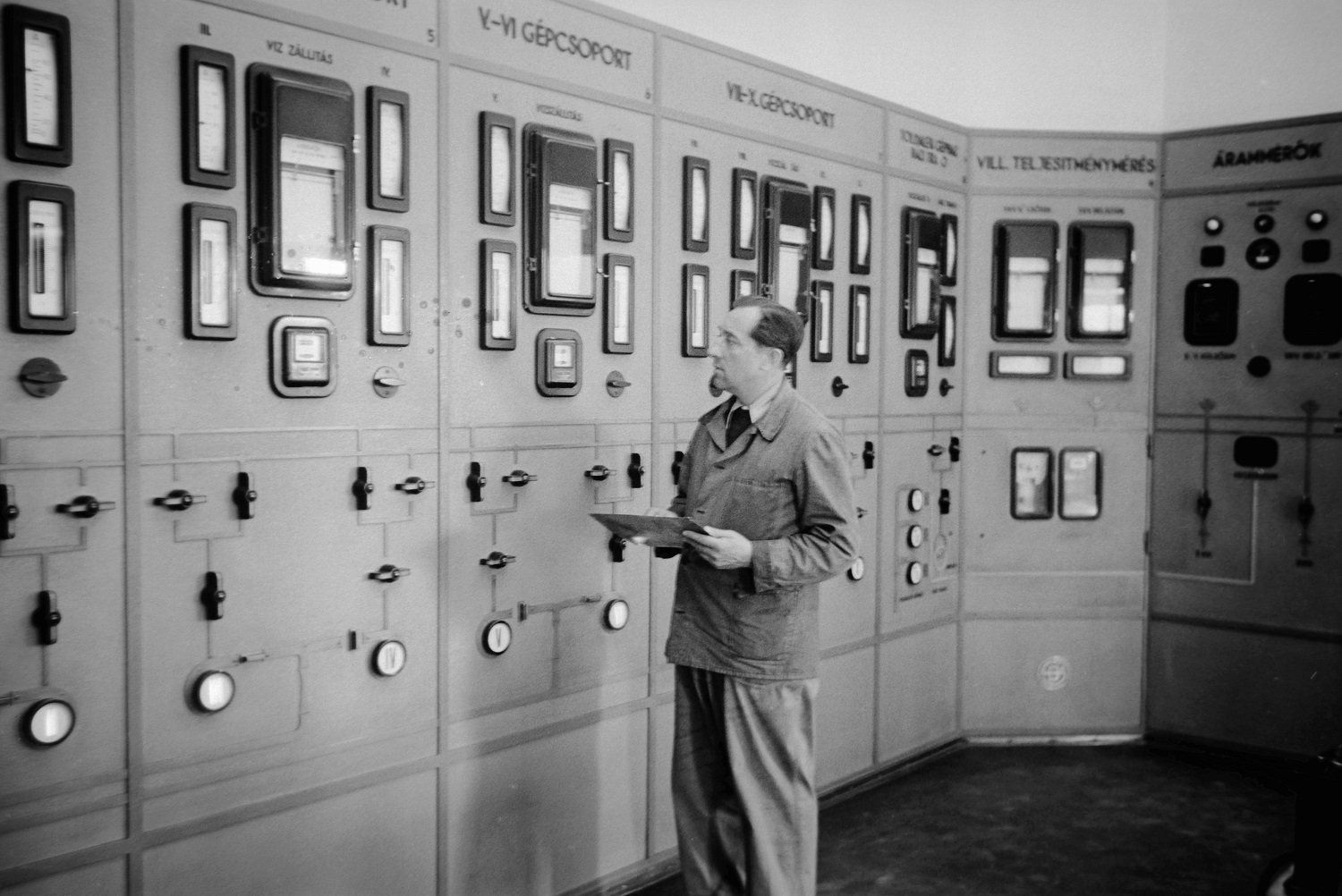 The machine house of the Káposztásmegyer Main Plant of the Budapest Waterworks in 1949 (Photo: Fortepan/No.: 32857)
The machine house of the Káposztásmegyer Main Plant of the Budapest Waterworks in 1949 (Photo: Fortepan/No.: 32857)
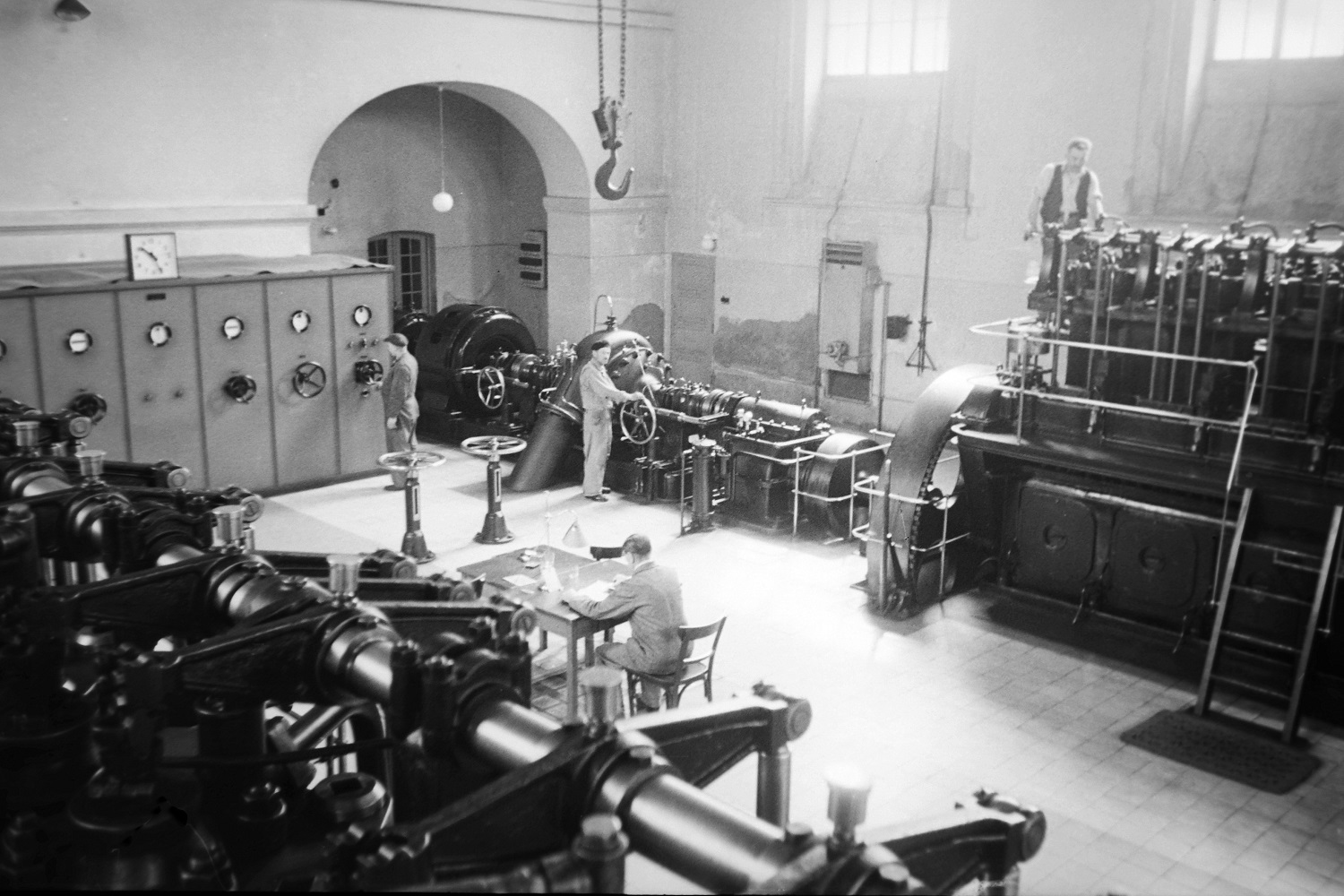 The site at 102 Váci Road has been continuously developed since the 1950s to meet growing demands (Photo: Fortepan/No.: 32858)
The site at 102 Váci Road has been continuously developed since the 1950s to meet growing demands (Photo: Fortepan/No.: 32858)
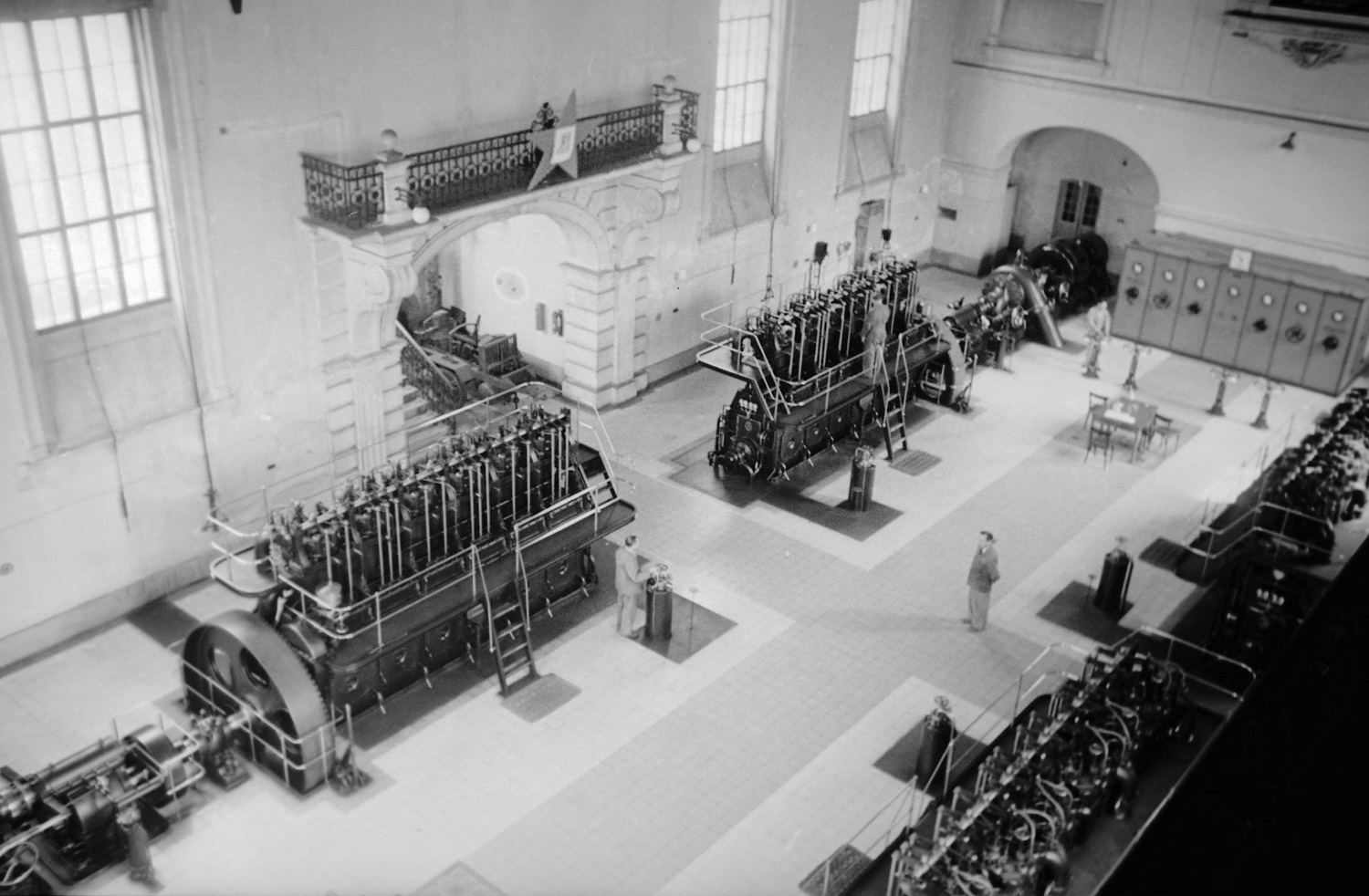
The machine house of the waterworks in 1949 (Photo: Fortepan/No.: 32859)
Mihály Kajlinger worked diligently on the water supply system of the capital. The Buda water-lifting installations and basins, the Kőbánya waterworks and the water tower, were also built under his management. He built the water lifting basins and booster pumps of the Buda hills. Instead of the so-called galleries, he implemented a new type of system. He took a stand next to the system of vertical wells and delivered the water obtained on the island of Szentendre to the pumping station through the tunnels passing under the Danube.
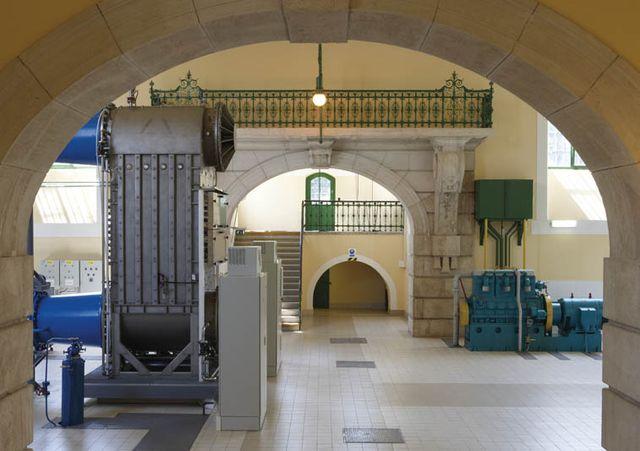
The machine house of the Káposztásmegyer waterworks today (Photo: vizmuvek.hu)
At the time of his directorship, in 1904, the 17,500 cubic metre Gellert Hill counterpressure pool was completed. With these developments, the water supply in Budapest has become the leader in Europe. He has published numerous studies and dissertations in the Magyar Mérnök és Építész Egylet Közlöny, in the Építő Ipar, and in the Technológiai Lapok on water supply, the Káposztásmegyer waterworks, and the epidemics affecting the capital. To eliminate water waste, consumption meters were introduced at his suggestion. The mass installation of water meters began in 1921 and became widespread in Budapest over three years.
He was elected president of the Association of Hungarian Engineers and Architects twice (1909–1912, 1916–1919), and his study, the 'Water Supply of Budapest in 1897–1900 and Its Lessons' was awarded the Ernő Hollán Prize in 1923.
In recognition of his merits, King Franz Joseph presented him with the Officer's Cross of the Order of Franz Joseph. In 1910, he was appointed royal court counsellor to manage the planning and construction of the water supply of the Kispest workers' housing estate (Wekerletelep).
He was an excellent athlete at a young age, winning several awards as a gymnast for the National Gymnastics Association. As the president of the Budapest Skating Association, he took an active part in its work. He was nature-loving and socially sensitive, as evidenced by the fact that he saw parks as an integral part of the waterworks and had residential buildings built for workers on the sites.
Mihály Kajlinger died on 5 April 1924 in Budapest. He was laid to rest in the Kerepesi cemetery.
Cover photo: The Waterworks of Káposztásmegyer today (Photo: vizmuvek.hu)

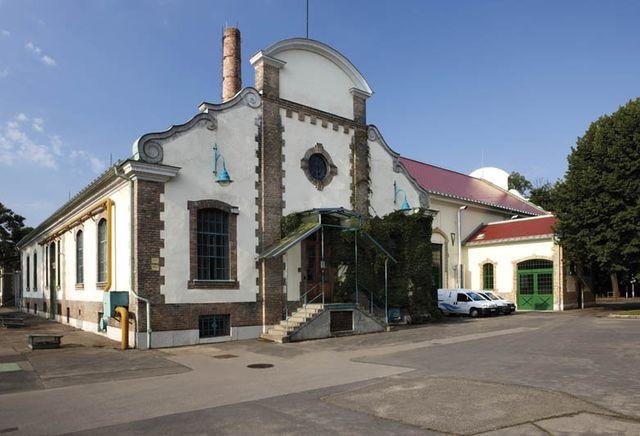

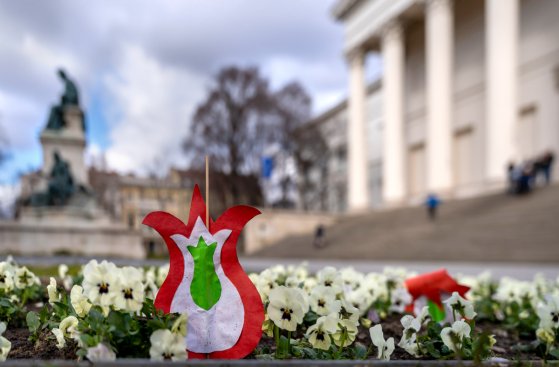

































Hozzászólások
Log in or register to comment!
Login Registration